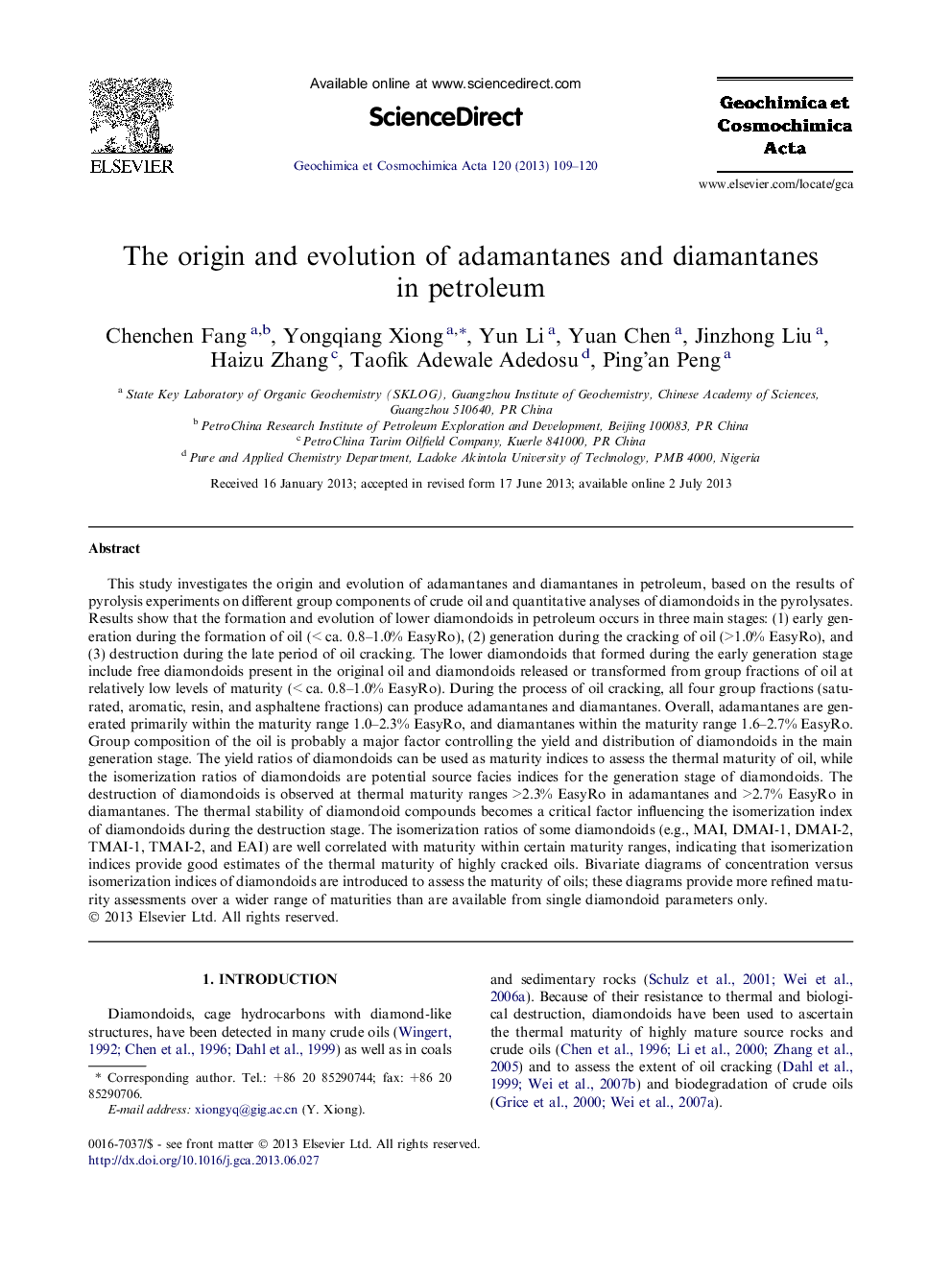| کد مقاله | کد نشریه | سال انتشار | مقاله انگلیسی | نسخه تمام متن |
|---|---|---|---|---|
| 6438973 | 1638037 | 2013 | 12 صفحه PDF | دانلود رایگان |
عنوان انگلیسی مقاله ISI
The origin and evolution of adamantanes and diamantanes in petroleum
ترجمه فارسی عنوان
منشاء و تکامل آدامانتها و دیامانتنها در نفت
دانلود مقاله + سفارش ترجمه
دانلود مقاله ISI انگلیسی
رایگان برای ایرانیان
موضوعات مرتبط
مهندسی و علوم پایه
علوم زمین و سیارات
ژئوشیمی و پترولوژی
چکیده انگلیسی
This study investigates the origin and evolution of adamantanes and diamantanes in petroleum, based on the results of pyrolysis experiments on different group components of crude oil and quantitative analyses of diamondoids in the pyrolysates. Results show that the formation and evolution of lower diamondoids in petroleum occurs in three main stages: (1) early generation during the formation of oil (< ca. 0.8-1.0% EasyRo), (2) generation during the cracking of oil (>1.0% EasyRo), and (3) destruction during the late period of oil cracking. The lower diamondoids that formed during the early generation stage include free diamondoids present in the original oil and diamondoids released or transformed from group fractions of oil at relatively low levels of maturity (< ca. 0.8-1.0% EasyRo). During the process of oil cracking, all four group fractions (saturated, aromatic, resin, and asphaltene fractions) can produce adamantanes and diamantanes. Overall, adamantanes are generated primarily within the maturity range 1.0-2.3% EasyRo, and diamantanes within the maturity range 1.6-2.7% EasyRo. Group composition of the oil is probably a major factor controlling the yield and distribution of diamondoids in the main generation stage. The yield ratios of diamondoids can be used as maturity indices to assess the thermal maturity of oil, while the isomerization ratios of diamondoids are potential source facies indices for the generation stage of diamondoids. The destruction of diamondoids is observed at thermal maturity ranges >2.3% EasyRo in adamantanes and >2.7% EasyRo in diamantanes. The thermal stability of diamondoid compounds becomes a critical factor influencing the isomerization index of diamondoids during the destruction stage. The isomerization ratios of some diamondoids (e.g., MAI, DMAI-1, DMAI-2, TMAI-1, TMAI-2, and EAI) are well correlated with maturity within certain maturity ranges, indicating that isomerization indices provide good estimates of the thermal maturity of highly cracked oils. Bivariate diagrams of concentration versus isomerization indices of diamondoids are introduced to assess the maturity of oils; these diagrams provide more refined maturity assessments over a wider range of maturities than are available from single diamondoid parameters only.
ناشر
Database: Elsevier - ScienceDirect (ساینس دایرکت)
Journal: Geochimica et Cosmochimica Acta - Volume 120, 1 November 2013, Pages 109-120
Journal: Geochimica et Cosmochimica Acta - Volume 120, 1 November 2013, Pages 109-120
نویسندگان
Chenchen Fang, Yongqiang Xiong, Yun Li, Yuan Chen, Jinzhong Liu, Haizu Zhang, Taofik Adewale Adedosu, Ping'an Peng,
